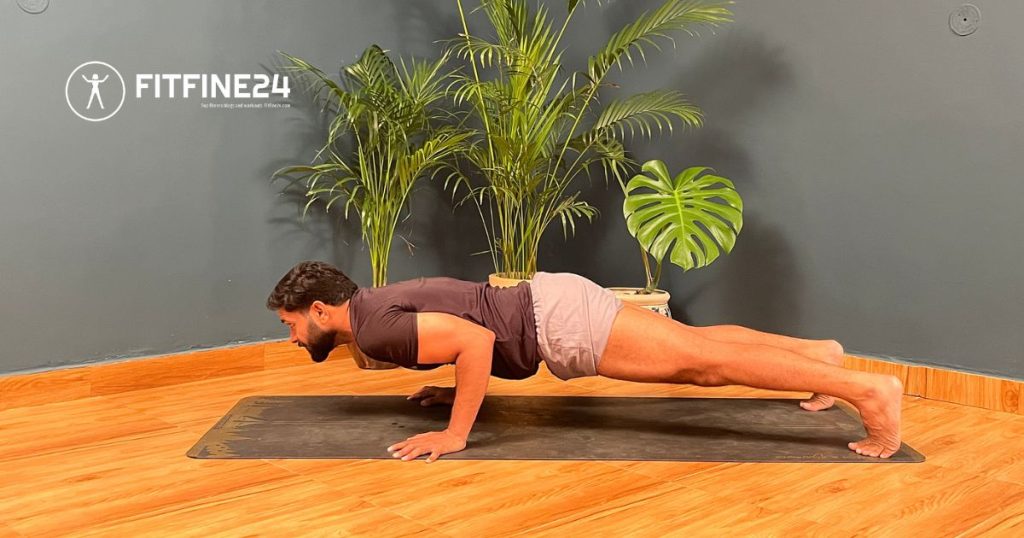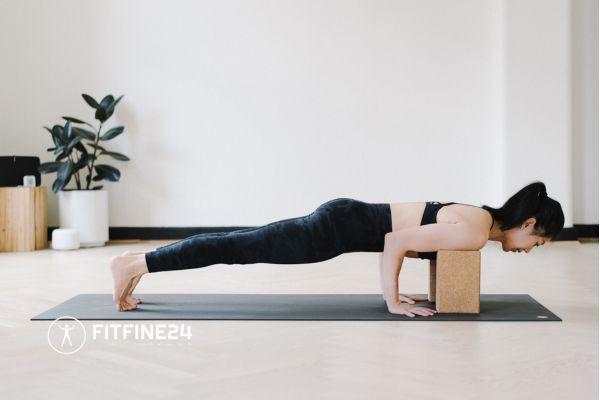
Chaturanga Dandasana also called the Four-Limbed Staff Pose and one you are likely to see a lot in Vinyasa and Ashtanga—is an important foundational pose across different types of yoga. Like a low plank, it requires strength, control, and alignment so it’s an essential move to build upper body strength and core stability. The body is engaged in Chaturanga Dandasana (Four-Limbed Staff Pose) even though it might not appear that way, which makes this pose great for strength, weight loss, and toning your muscles.
Pros Of Chaturanga Dandasana
Chaturanga Dandasana — It primarily works on the chest, shoulders, arms, and triceps. Consistent practice tones these areas to build upper body strength essential for the more advanced yoga poses and other fitness activities.
Enhances Core Stability
It strengthens the core muscles, including the abs and lower back to ensure better posture while improving protection from injury during alternative workout routines. A strong core is key to keeping you stable and helps with functional movement.
Cycling Builds Wrist and Forearm Strength
This means that you are putting weight on your wrists and forearms during Chaturanga Dandasana, which is functional because it strengthens these areas too. Greater strength can also improve wrist health and functionality in routine activities.
Because as we all have seen 90% of the public is already walking around with bad alignment issues and practicing yoga is one way to sooner straighten these physical deformities.
Keeping the body in one straight line while levitating above the earth requires correct alignment. Improves body awareness and balance which is crucial for all of your yoga poses as well as an off-the-mat life.
Brings the Body Closer to Advanced Asanas
This is an essential pose, it feels so simple but if you nail it you can then progress to a more difficult asana which is all based somewhere on this shape… think arm balances and inversions. This is a common transition in many Vinyasa flows, which makes it an important skill to move up to the next level in your practice.
So how to do Chaturanga Dandasana

Start in Plank Pose
Get into a high plank position with your hands directly under your shoulders, legs extended behind you, and your body in a straight line from head to heels. Keep your body firm and steady by squeezing your abs and thighs.
Lower Down with Control
Exhale and bend your elbows, hugging them close to your sides. Lower in slow motion so that your upper arms are parallel to the floor, and 1 inch above it. Your elbows should be bent at a 90-degree angle, and your body should form a straight line from the top of your head to your heels without sagging.
Engage the Core and Thighs
Use your core muscles and thighs to keep it in line. This technique will prevent your hips from falling or slouching shoulders and thus preventing pressure on lower back accordingly.
Maintain Proper Alignment
Keep your elbows close to your sides and gaze slightly forward to keep the neck lined up with the spine. Regularly you will see trainees make the mistake of lowering down too far (compromising shoulder health) or flaring their elbows out to the side when pressed.
Transition or Hold
You might only be able to hold Chaturanga Dandasana for a few breaths in your practice or you may transition directly into an Upward-Facing Dog or Cobra Pose as part of a Vinyasa flow.
Common Mistakes to Avoid

Dropping the Hips
Loosening the hips allows for weakening of the alignment and lower back strain. Engage your core and boot to keep your body straight
Flared Elbows
Flared Elbows Lead to Shoulder Injuries Form tip: Your elbows should always remain close to your ribs as you complete the movement.
Collapsing Shoulders
Make sure your shoulders don´t round forward or drop below your elbows. Instead, keep a proud-placed and engaged chest with broad shoulders down and back.
Holding the Breath
Remember to breathe! Just holding your breath can heighten anxiety. Your exhale here serves to help you maintain grip and control, as well as settle further into this pose.
Modifications and Variations
Those new to the practice and those needing modification can drop their knees in chaturanga dandasana to ease some of the stress on the upper body while still engaging in correct form.

Blocks beneath Chaturanga
This adds a bit of extra support under your shoulders so you can still build strength and confidence in the correct alignment.
High Plank Hold
SourceTip: If you struggle to lower down, hold a high plank with strong arms and core to build the strength needed for Chaturanga.
Chaturanga Variation It’s like a Boss!
Take it to the next level with Chaturanga push-ups or spice things up by drawing one leg up as you lift yourself back into plank position, using your abs and inner thighs for extra work in those muscle groups.
The Perfect Chaturanga + Bonus Tips
Include wrist stretches, shoulder rolls, and some very light core work in your warm-up to get the muscles ready for Chaturanga.
Focus on Form First
Choose alignment vs depth Then to just do a full Chaturanga with crap form.
Strengthen Supporting Muscles
Focus on strengthening your triceps, shoulders, and core with exercises like tricep dips, push-ups, and plank variations to help you build up to your Chaturanga.
Consistency is Key
Frequent practice, but my words of wisdom are to listen to your body. Chaturanga Dandasana gets easier with practice, as your using more strength and the proper form is developed.
Conclusion
Chaturanga Dandasana isn’t just a yoga pose, it’s an assessment of… Chaturanga Dandasana: A Prologue for Beginners to Upper Body Fitness Make this strong stance kind of a daily posture and you’ll have stronger overall muscles, stability, and body control. Find more fitness-related information and articles on FitFine24 to enhance your yoga practice benefits and fitness goals!

